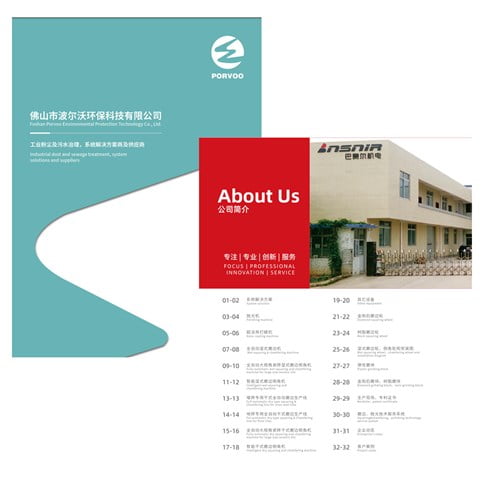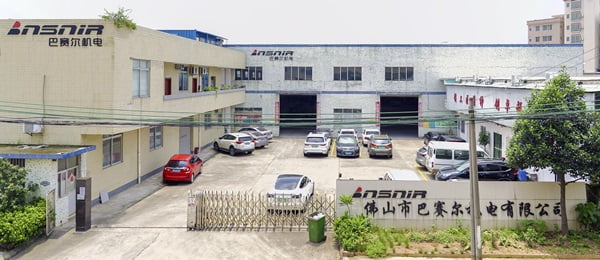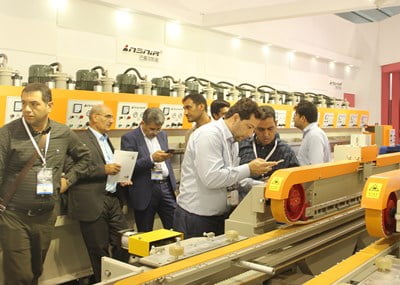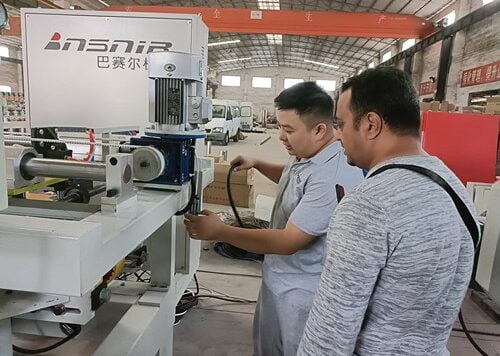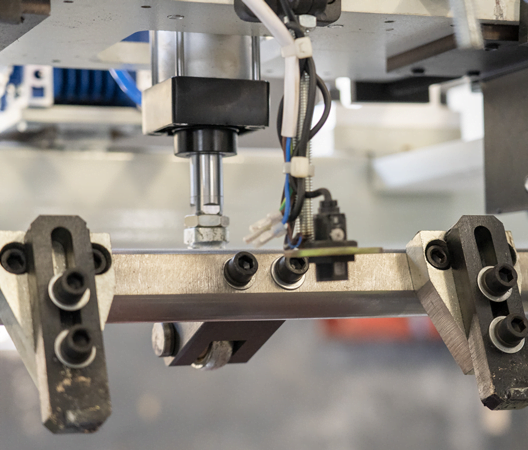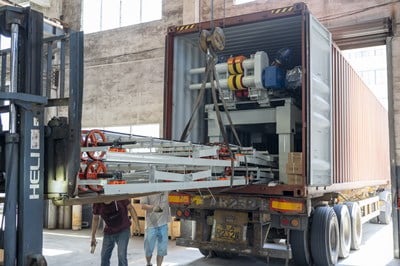Ceramic tile manufacturers face a critical decision that directly impacts product quality, production costs, and operational efficiency: choosing between wet and dry polishing methods. This choice affects everything from surface finish quality to environmental compliance, yet many producers struggle with incomplete information about each approach’s true capabilities and limitations.
The consequences of selecting the wrong polishing technique extend far beyond initial equipment costs. Poor surface quality leads to product rejection rates as high as 15-20%, while inefficient processes can increase energy consumption by 30-40% compared to optimized systems. Additionally, regulatory compliance issues around dust control or water treatment can result in costly facility modifications and operational delays.
This comprehensive analysis examines both wet polishing and dry polishing techniques, providing detailed machine comparisons, performance data, and practical insights to help manufacturers make informed decisions. We’ll explore technical specifications, cost implications, and real-world applications while addressing common challenges faced by ceramic tile producers worldwide. BASAIR Tech has been at the forefront of polishing technology development, providing solutions that address these critical manufacturing decisions.
What Are Polishing Methods in Ceramic Tile Production?
Polishing methods in ceramic tile manufacturing represent sophisticated surface finishing processes that transform rough, unglazed ceramic surfaces into smooth, lustrous products ready for commercial applications. These techniques utilize mechanical abrasion combined with chemical interactions to achieve desired surface characteristics, ranging from matte finishes to high-gloss mirror-like surfaces.
The fundamental principle behind all ceramic polishing involves progressive material removal using increasingly fine abrasive materials. Initially, coarser grits remove major surface irregularities and scratches, while subsequent stages employ finer abrasives to achieve the final desired finish. This graduated approach ensures optimal surface quality while maintaining dimensional accuracy crucial for tile installation.
Core Components of Polishing Systems
Modern ceramic tile polishing systems incorporate several critical components regardless of whether they employ wet or dry methodologies. Polishing heads equipped with diamond-embedded tools provide the primary abrasive action, while precision control systems manage pressure, speed, and feed rates. Advanced systems integrate automated tool changing capabilities and real-time surface quality monitoring.
The choice between wet and dry polishing fundamentally alters the entire system architecture. Wet systems require elaborate water circulation, filtration, and waste management infrastructure, while dry systems demand sophisticated dust collection and air filtration equipment. Each approach presents unique advantages and challenges that manufacturers must carefully consider.
| System Component | Wet Polishing | Dry Polishing |
|---|---|---|
| Abrasive Cooling | Water circulation | Air flow systems |
| Debris Management | Slurry collection | Dust extraction |
| Tool Life | Extended (cooling effect) | Reduced (heat buildup) |
| Surface Quality | Consistent hydration | Variable friction heat |
Industry research indicates that polishing represents approximately 15-25% of total ceramic tile manufacturing costs, making method selection a critical economic decision. The complexity of modern polishing requirements has driven equipment manufacturers to develop increasingly sophisticated solutions that optimize both quality and efficiency.
How Do Wet Polishing Machines Work in Tile Manufacturing?
Wet polishing systems utilize continuous water flow to facilitate the abrasive process, creating a controlled environment where water serves multiple critical functions simultaneously. The water acts as a coolant, preventing excessive heat buildup that could damage both the ceramic surface and diamond tools. Additionally, it functions as a lubricant, reducing friction and enabling smoother tool movement across the tile surface.
The water circulation system in wet polishing machines represents a sophisticated engineering achievement. High-pressure pumps deliver precisely controlled water volumes to each polishing head, typically ranging from 5-15 liters per minute depending on line speed and tile dimensions. This water carries away debris particles, preventing them from causing surface scratches or tool wear.
Technical Process Advantages
Wet polishing delivers superior surface consistency due to the thermal stability provided by continuous cooling. Surface temperature variations during wet polishing typically remain within 2-3°C, compared to 15-20°C fluctuations common in dry systems. This temperature control directly translates to improved surface flatness and reduced internal stress formation.
Tool life extension represents another significant advantage of wet polishing techniques. Diamond segment wear rates in wet systems average 40-60% lower than comparable dry applications. The water’s cooling and lubricating effects reduce thermal shock on diamond crystals, maintaining cutting efficiency throughout extended production runs.
However, wet polishing presents notable challenges including complex water treatment requirements and slurry management. According to industry studies, wet polishing systems generate approximately 200-300 liters of contaminated slurry per hour of operation, requiring sophisticated filtration and settling systems.
Water Management Considerations
Effective water management in wet polishing operations requires closed-loop systems with multi-stage filtration. Primary settling tanks remove coarse particles, while cyclone separators and filter presses handle fine particulate matter. Advanced systems incorporate automated pH control and chemical treatment to maintain optimal water conditions.
Water quality directly impacts polishing performance and surface quality. Hardness levels above 200 ppm can cause mineral deposits on tile surfaces, while pH variations affect tool performance and surface characteristics. Professional wet polishing installations typically include water softening and pH buffering systems to maintain consistent conditions.
The line polishing machine for ceramic tile production from BASAIR incorporates advanced water management features that optimize both performance and environmental compliance through innovative recycling technologies.
What Makes Dry Polishing Techniques Different?
Dry polishing systems eliminate water usage entirely, relying instead on sophisticated dust collection and air flow management to maintain optimal operating conditions. This fundamental difference creates distinct operational characteristics that can provide significant advantages in specific manufacturing environments and applications.
The absence of water in dry polishing systems enables higher processing temperatures, which can actually benefit certain ceramic compositions. Some advanced ceramic formulations achieve better surface hardening and improved scratch resistance when processed at elevated temperatures. Dry systems typically operate at surface temperatures of 80-120°C, compared to 40-60°C in wet systems.
Dust Management Technology
Modern dry polishing machines incorporate advanced dust extraction systems capable of capturing 99.5% of generated particles. Multi-stage filtration combines cyclonic separation with HEPA-grade filters to ensure regulatory compliance and operator safety. These systems typically process 10,000-15,000 cubic meters of air per hour to maintain effective dust control.
The dust collection process in dry polishing actually recovers valuable ceramic material that can be recycled back into production. Industry data shows that recovered dust can represent 2-3% of total raw material costs, providing meaningful economic benefits beyond the primary polishing function.
Dry polishing techniques excel in applications requiring rapid processing speeds and minimal setup complexity. Without water circulation systems, dry machines can be relocated and reconfigured more easily, providing manufacturing flexibility valuable in custom tile production or smaller batch operations.
Performance Characteristics
Tool selection for dry polishing requires specific attention to heat resistance and debris clearance capabilities. Resin-bonded diamond tools with open structures perform better in dry applications, while metal-bonded segments may experience premature wear due to heat buildup. Optimal tool selection can achieve surface quality comparable to wet systems while maintaining acceptable tool life.
Surface quality in dry polishing depends heavily on consistent dust removal and temperature control. Advanced systems employ programmable air flow patterns and temperature monitoring to maintain optimal conditions throughout the polishing sequence.
| Performance Metric | Wet Polishing | Dry Polishing |
|---|---|---|
| Processing Speed | 8-12 m/min | 12-18 m/min |
| Setup Time | 45-60 minutes | 15-25 minutes |
| Tool Life | 800-1200 m² | 600-800 m² |
| Surface Consistency | ±0.02 mm | ±0.03 mm |
Which Polishing Method Delivers Better Performance Results?
Performance evaluation between wet and dry polishing methods requires analysis across multiple dimensions including surface quality, production efficiency, and operational reliability. Each method demonstrates superior performance in specific applications, making universal recommendations challenging without considering individual manufacturing requirements.
Surface finish quality represents the most critical performance metric for most ceramic tile applications. Wet polishing consistently delivers superior surface uniformity due to thermal stability and debris removal efficiency. Gloss level measurements show wet-polished surfaces achieve 85-95 on the gloss meter scale, while dry-polished surfaces typically range from 80-90 under comparable conditions.
Production Efficiency Analysis
Processing speed capabilities favor dry polishing systems, which can operate 20-30% faster than wet systems due to elimination of water-related constraints. Dry systems avoid issues such as water film interference and slurry viscosity that can limit line speeds in wet operations. However, this speed advantage must be weighed against potential quality compromises and increased tool costs.
In our experience working with ceramic manufacturers across different market segments, production efficiency depends significantly on batch sizes and product mix. Large-volume producers processing standard tile sizes benefit most from wet polishing consistency, while smaller manufacturers with frequent product changes often prefer dry system flexibility.
Energy consumption analysis reveals interesting trade-offs between the two methods. Wet systems require significant energy for water circulation and treatment, typically consuming 15-20% more electrical power than dry systems. However, dry systems may require more frequent tool changes and maintenance, affecting overall operational costs.
Quality Consistency Factors
Surface defect rates provide another crucial performance indicator. Industry research conducted by the Ceramic Tile Institute shows wet polishing achieves defect rates of 0.5-1.2%, while dry polishing typically ranges from 1.0-2.1%. These differences become particularly significant in premium tile production where quality standards are most stringent.
Temperature-related stress in ceramic materials represents a critical quality factor. Wet polishing’s temperature control prevents thermal expansion differences that can cause micro-cracking or dimensional variations. This advantage becomes more pronounced with larger tile formats and thinner profiles where thermal stress sensitivity increases.
What Are the Cost Implications of Each Polishing Approach?
Initial capital investment requirements differ substantially between wet and dry polishing systems, with wet systems typically requiring 40-60% higher upfront investment due to water treatment infrastructure complexity. A complete wet polishing line for medium-scale production costs approximately $800,000-1,200,000, while comparable dry systems range from $500,000-800,000.
Operating cost analysis reveals more complex relationships between the two approaches. While wet systems consume more energy and require expensive water treatment, dry systems incur higher tool replacement costs and more frequent maintenance requirements. Industry data indicates wet polishing operating costs of $2.50-3.20 per square meter, compared to $2.80-3.50 for dry polishing.
Long-term Economic Considerations
Tool consumption represents a major ongoing expense in both systems. Wet polishing diamond tools last approximately 40-60% longer than dry system tools, providing significant cost advantages over multi-year production cycles. A typical wet polishing installation might consume $15,000-20,000 in diamond tools monthly, while comparable dry systems require $22,000-28,000 in tool replacement costs.
Water treatment and disposal costs in wet systems can be substantial, particularly in regions with strict environmental regulations. Monthly water treatment costs often range from $3,000-8,000 depending on local regulations and discharge requirements. However, water recycling systems can reduce fresh water consumption by 85-90%, substantially lowering ongoing costs.
Maintenance complexity affects both direct costs and production downtime. Wet systems require specialized technicians familiar with both mechanical and water treatment systems, leading to higher labor costs. Dry system maintenance focuses primarily on dust collection and mechanical components, allowing broader technician availability and potentially lower service costs.
Return on Investment Analysis
Payback period calculations must consider product mix, production volumes, and local utility costs. High-volume producers processing premium tiles typically achieve better returns with wet polishing due to quality advantages and lower defect rates. Manufacturers focusing on standard-grade tiles or operating in water-scarce regions often find dry polishing more economically attractive.
The advanced polishing solutions available today incorporate cost optimization features that can significantly improve return on investment regardless of the chosen polishing method.
| Cost Category | Wet Polishing (Annual) | Dry Polishing (Annual) |
|---|---|---|
| Tool Replacement | $180,000-240,000 | $264,000-336,000 |
| Energy Consumption | $96,000-120,000 | $80,000-100,000 |
| Maintenance/Supplies | $45,000-65,000 | $35,000-50,000 |
| Water Treatment | $36,000-96,000 | $0 |
How Do Environmental Factors Influence Polishing Method Selection?
Environmental considerations increasingly drive polishing method selection as ceramic manufacturers face stricter regulations and corporate sustainability commitments. Water availability, discharge regulations, air quality standards, and waste management requirements all significantly impact the viability of different polishing approaches.
Regional water scarcity affects wet polishing feasibility in many manufacturing locations. Areas experiencing drought conditions or competing water usage demands may restrict industrial water consumption, making dry polishing the only viable option. Conversely, regions with abundant water resources but strict air quality regulations may favor wet systems despite higher operating complexity.
Regulatory Compliance Challenges
Air quality regulations particularly impact dry polishing operations, requiring sophisticated dust collection systems and continuous monitoring. European emission standards limit particulate discharge to less than 10 mg/m³, necessitating high-efficiency filtration systems that can represent 15-20% of total equipment costs. These requirements often tip economic calculations toward wet polishing in heavily regulated markets.
Water discharge regulations create comparable challenges for wet polishing systems. pH levels, suspended solids, and chemical oxygen demand (COD) must meet strict limits before discharge to municipal treatment systems. Non-compliance penalties can reach $10,000-50,000 per incident, making proper treatment system design crucial for wet polishing operations.
It’s worth noting that environmental regulations continue evolving, with increasing focus on circular economy principles and waste minimization. Future regulatory trends likely favor systems that maximize material recovery and minimize waste generation, potentially influencing long-term polishing method selection.
Sustainability Metrics
Carbon footprint analysis reveals complex relationships between polishing methods and environmental impact. Wet polishing systems typically consume 15-25% more energy due to pumping and treatment requirements, directly increasing carbon emissions. However, longer tool life and lower defect rates can offset some of this disadvantage through reduced material consumption.
Water conservation efforts drive innovative approaches to wet polishing system design. Advanced recycling systems can reduce fresh water consumption by 90-95%, making wet polishing viable even in water-stressed regions. These systems incorporate multi-stage treatment including flocculation, settling, and ultrafiltration to maintain water quality throughout multiple recycling cycles.
Waste reduction capabilities differ significantly between polishing methods. Dry systems enable direct recovery of ceramic dust for recycling into tile bodies, while wet systems produce slurry requiring dewatering and disposal. Industry consensus suggests that dust recovery can reduce raw material costs by 1.5-2.5%, providing both environmental and economic benefits.
What Technical Specifications Matter Most in Machine Comparison?
Critical technical specifications for polishing machine evaluation include processing capacity, surface quality capabilities, dimensional accuracy, energy efficiency, and automation features. These parameters directly impact production efficiency, product quality, and operational costs throughout the equipment lifecycle.
Processing capacity specifications must account for both line speed and tile size flexibility. Modern high-performance systems achieve line speeds of 15-25 meters per minute while maintaining consistent surface quality across various tile formats. Feed rate consistency becomes particularly critical when processing large-format tiles where even minor variations can cause surface defects.
Key Performance Indicators
Polishing head configuration represents a fundamental specification affecting both quality and productivity. Multi-head systems with 8-16 polishing stations enable progressive abrasive sequences from coarse to fine grits. Head spacing, pressure control range, and individual head adjustability all impact the system’s ability to handle diverse product requirements.
Dimensional control capabilities distinguish professional-grade equipment from lower-cost alternatives. Precision systems maintain thickness tolerances within ±0.1mm across full tile surfaces while achieving flatness specifications of ±0.2mm for large-format tiles. These tolerances become increasingly challenging to maintain as processing speeds increase.
Automation features significantly impact operational efficiency and product consistency. Advanced systems incorporate automatic tool changing, real-time quality monitoring, and predictive maintenance capabilities. Integration with factory management systems enables production optimization and quality traceability throughout the manufacturing process.
Control System Sophistication
Modern polishing machines employ sophisticated control systems with touch-screen interfaces, recipe management, and remote monitoring capabilities. These systems enable operators to quickly adjust parameters for different products while maintaining detailed production records. Advanced diagnostics can predict maintenance requirements and optimize tool replacement schedules.
Variable frequency drives (VFDs) on all major motors enable precise speed control and energy optimization. High-quality systems incorporate regenerative braking to recover energy during deceleration cycles, reducing overall power consumption by 8-12% compared to conventional motor control systems.
Process monitoring sensors throughout the system provide real-time feedback on critical parameters including vibration, temperature, power consumption, and surface quality. This data enables automatic parameter adjustment to maintain optimal conditions and early detection of potential problems.
| Specification Category | Premium Systems | Standard Systems |
|---|---|---|
| Line Speed Range | 5-25 m/min | 8-15 m/min |
| Thickness Tolerance | ±0.05mm | ±0.15mm |
| Flatness Accuracy | ±0.15mm | ±0.30mm |
| Power Consumption | 45-65 kW | 55-85 kW |
Professional ceramic tile polishing equipment incorporates these advanced specifications to deliver consistent, high-quality results while optimizing operational efficiency and reducing total cost of ownership.
Which Industries Benefit Most from Specific Polishing Techniques?
Different ceramic tile market segments demonstrate clear preferences for specific polishing methods based on quality requirements, production volumes, and cost sensitivity. Understanding these application patterns helps manufacturers align their polishing method selection with target market demands and competitive positioning.
Premium residential and commercial tile markets typically require wet polishing to achieve the surface quality and consistency demanded by discerning customers. High-end applications such as luxury hotels, upscale retail environments, and premium residential installations cannot tolerate the surface variations occasionally present in dry-polished products.
Market Segment Analysis
Large-format tile production strongly favors wet polishing due to the thermal stability required for maintaining flatness across expansive surfaces. Tiles exceeding 600x1200mm dimensions experience significant thermal stress during processing, making wet polishing’s temperature control crucial for preventing warpage and dimensional variations.
Industrial and commercial applications with high traffic requirements benefit from either polishing method, provided appropriate quality control measures are implemented. However, projects requiring rapid delivery schedules often prefer dry polishing’s faster processing speeds and reduced setup complexity.
In our experience, export-oriented manufacturers typically choose wet polishing systems to meet international quality standards and customer expectations. European and North American markets particularly emphasize surface quality consistency that wet polishing delivers more reliably.
Geographic and Cultural Preferences
Regional preferences for polishing methods often reflect local manufacturing traditions and market expectations. Italian and Spanish tile manufacturers, renowned for premium products, predominantly utilize wet polishing systems. These manufacturers have built reputations on surface quality that justifies the additional complexity and cost of wet processing.
Asian manufacturers serving cost-sensitive markets often employ dry polishing to achieve competitive pricing while maintaining acceptable quality levels. The rapid setup and processing speed advantages of dry systems align well with flexible manufacturing strategies common in these markets.
Emerging markets with developing infrastructure may favor dry polishing due to reduced complexity and lower skilled labor requirements. Water treatment system maintenance and troubleshooting require specialized expertise that may not be readily available in all manufacturing locations.
The ceramic tile industry continues evolving toward greater customization and shorter production runs, potentially favoring the flexibility advantages of dry polishing systems. However, quality requirements remain paramount in most market segments, ensuring continued demand for wet polishing capabilities.
Understanding these industry-specific requirements enables manufacturers to make informed decisions about polishing method selection that align with their target markets and competitive strategies. The choice between wet and dry polishing ultimately depends on balancing quality requirements, production efficiency, and cost considerations specific to each manufacturer’s unique circumstances.
Conclusion
The selection between wet and dry polishing methods for ceramic tile production represents a critical strategic decision that impacts quality outcomes, operational efficiency, and long-term profitability. Our comprehensive analysis reveals that wet polishing delivers superior surface consistency and quality control, making it ideal for premium applications and large-format tiles. Conversely, dry polishing offers processing speed advantages, operational flexibility, and reduced infrastructure complexity that benefits manufacturers serving cost-sensitive markets or requiring rapid product changeovers.
Key performance differentiators include surface quality consistency, where wet systems achieve 85-95 gloss levels versus 80-90 for dry systems, and processing speeds, where dry systems operate 20-30% faster. Economic considerations show wet systems requiring 40-60% higher capital investment but potentially lower operating costs over extended production cycles due to reduced tool consumption and lower defect rates.
For manufacturers targeting premium markets or producing large-format tiles, wet polishing’s thermal stability and surface quality advantages typically justify the additional complexity and investment. Producers focused on standard-grade products, rapid delivery requirements, or operating in water-constrained environments often find dry polishing more strategically advantageous.
Future industry trends toward automation, sustainability, and customization will continue influencing polishing method selection. Hybrid approaches combining both techniques and advanced control systems represent emerging opportunities for manufacturers seeking to optimize performance across diverse product portfolios.
Whether pursuing wet or dry polishing solutions, partnering with experienced equipment manufacturers ensures access to the latest technological advances and application expertise. The comprehensive polishing solutions available today provide manufacturers with sophisticated options to meet their specific quality, efficiency, and economic objectives while maintaining competitive positioning in an increasingly demanding global marketplace.
Frequently Asked Questions
Q: What are the main differences between wet and dry polishing machines for ceramic tile production?
A: Wet and dry polishing machines differ primarily in their approach to managing dust and heat during the polishing process. Wet polishing uses water to cool the polishing pads, reducing dust and heat, while dry polishing does not use water, making it more portable but potentially creating more dust. Wet polishing is ideal for achieving a smoother finish and extending pad life, while dry polishing is better suited for projects without water access.
Q: Which type of polishing machine is best for achieving a high-gloss finish on ceramic tiles?
A: Wet polishing machines are generally better for achieving a high-gloss finish on ceramic tiles. They produce less dust and reduce friction, resulting in a smoother and more consistent surface finish. This makes them ideal for projects requiring a professional-quality finish.
Q: What are the advantages and disadvantages of using a wet polishing machine for ceramic tile production?
A: The advantages of using a wet polishing machine include a smoother finish, reduced dust, and longer pad life. However, it requires access to water and can be messy. The main disadvantage is the need for cleanup and a water source, which may not be practical for all locations.
Q: How does the choice between wet and dry polishing affect the cost of ceramic tile production?
A: Wet polishing machines typically require more setup and cleanup, which can increase labor costs. However, they may extend the life of polishing pads and provide a higher-quality finish, potentially reducing material costs in the long run. Dry polishing is often more portable and quicker to set up, but it may require more frequent pad replacements due to increased wear.
Q: In what situations is a dry polishing machine preferred for ceramic tile production?
A: Dry polishing machines are preferred when water access is limited or when working in tight spaces. They offer quick setup and operation, making them ideal for smaller projects or on-site work where water availability is a concern. However, they can produce more dust and may not provide as smooth a finish as wet polishing.
External Resources
Wet vs Dry polishing, which is better? – ATS Diamond Tools – Explores the advantages and disadvantages of both wet and dry polishing methods, including their application on ceramic tiles and the different types of polishing machines used in tile production.
Wet Vs Dry Polishing Pads – Stonegate Knowledge Hub – Provides an in-depth comparison of wet and dry polishing pads, discusses when to use each type, and examines their use with polishing machines in production environments.
Wet Polishing vs. Dry Polishing: Which Is Best? – Dynamic Stone Tools – Offers a side-by-side analysis of wet and dry polishing methods, emphasizing their impact on finish quality and suitability for different workspaces and machine use.
Wet vs. Dry Grinding and Polishing: What You Must Know – Onfloor – Outlines the technical distinctions between wet and dry grinding/polishing machines, with insights into operational efficiency, finish, and surface preparation for ceramic and stone materials.
Dry vs. Wet in the World of Grinding and Polishing – Aramsco – Discusses the resource and finish implications of using wet versus dry methods in grinding and polishing, relevant for ceramic tile and similar manufactured surfaces.
A Guide to Polishing Machines for Tiles – Tile Magazine – Reviews various types of polishing machines, including wet and dry systems, and provides guidance on selecting the appropriate equipment for ceramic tile production (closely related to the exact keyword).

